Route 7
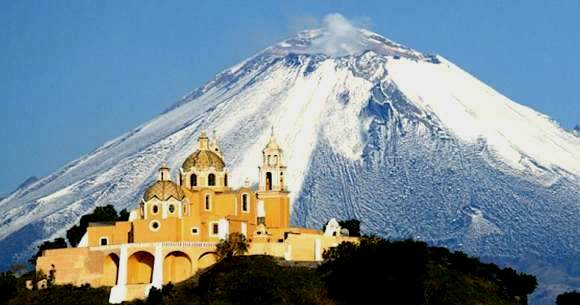
A Thousand Flavors of Mole
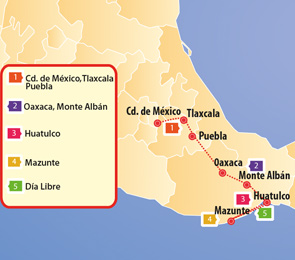
Mexico City
For most people, Mexico City is an end in itself, but from another point of view, it is also a starting point: from here, you can begin almost any tour – gastronomic, archaeological, architectural, etc. – or establish a base from where you set out on longer travels to other parts of the Republic. It goes without saying that this mega-metropolis has everything, for every taste; you just need to have a clear navigating plan to sail through it without getting lost. Mexico City is the 4th largest Metro Area in the world with 21.5 million people.
It probably seems like an exaggeration, but this city has no limits. It listens to all sorts of music: jazz in nightspots, opera in palaces, mariachi in cantinas, rock in stadiums, boleros, classical, Pre-Hispanic chants. It dances every rhythm: duranguense in rodeos, ballet in stages, danzón in gardens, cumbia in dancehalls, electronic in afterhours. It dresses in every manner: huipil or suit, guayabera or charro hats, fashionable high heels or leather sandals and a penacho (feather crown). Singular and giant, traditional yet cosmopolitan, Mexico is one of the few cities that contain a country, and also a planet within its borders.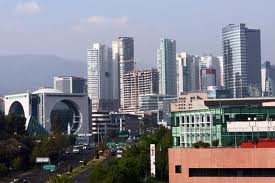
The megalopolis has not completely replaced the garden that saw its origins. In Xochimilco, the famous channels and chinampas (small land areas in the shallow lake bed) still survive, as well as the very beautiful landscape that once dominated the marshy valley. Near Cumbres del Ajusco, trees cover the mountains that surround the city and you can be witness to the recuperation of species like the white-tailed deer and the volcano rabbit, or zacatuche. In Desierto de los Leones, hiking lovers will find a combination of old convents and lush forests. And all of this is available without leaving the city.
Mexico City has, until today, four designations as World Heritage Sites. In the Centro Histórico – exemplary core of the City of Palaces – the opulent Colonial architecture rests over vestiges of the former Mexica metropolis. In Xochimilco, nature is conserved between channels and trajineras (traditional boats), like an American Venice. Ciudad Universitaria and Casa Estudio de Barragán are two jewels – one huge and one miniscule – of Mexican modern architecture, and they reflect the building creativity of this fascinating city.
The wealth in this city goes beyond its condition as a great metropolis. Its Anthropology Museum pays tribute to the millenary memory of the whole country. In the National Palace, murals scrutinize the Mexican core identity, and next to it, the entrails of the Templo Mayor indicate that this was once an imperial capital. Sumptuous places like the Auditorio Nacional or Bellas Artes present the best in scenic arts, and the constellation of museums protects the essence of Mexican plastic expression. Mexicas and Conquerors already knew it: this city is a treasure in itself.
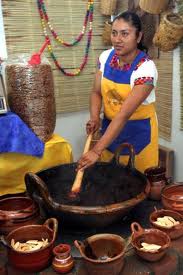 San Pedro Atocpan
San Pedro Atocpan
This place did not become famous because it is part of Milpa Alta, but because it is the gastronomic sanctuary that hosts the Feria Nacional del Mole (National Mole Fair) every year. During this celebration, locals and guests celebrate the existence of this elaborate concoction, but specifically that of the local mole: the almendrado (prepared with almonds). San Pedro Atocpan is the world capital of mole. Here, 60 percent of the country’s mole is produced, and 90 percent of what is consumed in the Distrito Federal. Nine of every ten inhabitants in this community work in the production of this traditional sauce, which requires up to 28 ingredients and always includes mulato, pasilla and ancho chilies. Other traditional dishes are pickled nopales, amaranth bread and bean tamales, accompanied, naturally, with the famous mole. During the festivities, visitors can try all the recipes available and buy some to take home, enjoy the palenque and various traditional shows, like Papantla’s voladores (flying men).
Although today it is one more neighborhood in the sprawling metropolis called Mexico City, San Pedro Atocpan conserves the kind of atmosphere that is only found in towns. The inclusion in the urban landscape has not diminished its temperament, of strong indigenous presence, which maintains Nahuatl as a live language in the community. Its typical product, mole, has become a large industry since its humble origins in the 1950s: both as a cooperative enterprise or diversified like it is today. In San Pedro Atocpan, the megalopolis recovers provincial freshness without having to leave the city.
Tlaxcala
In the discreet but very beautiful capital of the state of Tlaxcala, travelers can enjoy a relaxed Colonial ambiance, with gastronomy that reveils the best of the land: corn, nopal (cactus), green tomatoes and species from the region are the basis of a series of dishes whose only theme in common is that they could all appear in a Mexican recipe book: escamoles, huitlacoche, mixiotes, barbacoa, quesadillas, and naturally, mole for festive days (accompanied by delicious freshly-made tortillas).
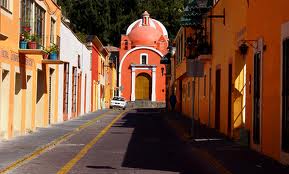 The biography of Xicohtencatl Axayacatzin is one of a tragic hero. He resisted two empires, the Spanish and the Mexica, and succumbed to the tension of these ideals. His rebellious lordship in Tizatlan is his reflection, for he also fought destiny almost in vain. From this great capital, today we have the stunning polychromatic altars and like Carthage, it was to be dismantled to build invading structures. Although among florid wars and Toledo steel Tlaxcala’s history has seemed controversial, the spirit of Xicohtencatl is perceived in Tizatlan as the yearning for liberty.
The biography of Xicohtencatl Axayacatzin is one of a tragic hero. He resisted two empires, the Spanish and the Mexica, and succumbed to the tension of these ideals. His rebellious lordship in Tizatlan is his reflection, for he also fought destiny almost in vain. From this great capital, today we have the stunning polychromatic altars and like Carthage, it was to be dismantled to build invading structures. Although among florid wars and Toledo steel Tlaxcala’s history has seemed controversial, the spirit of Xicohtencatl is perceived in Tizatlan as the yearning for liberty.
Tlaxcala is the Mecca of elaborate Baroque art in Mexico. It is also the home of the Museo Vivo de Artes y Tradiciones Populares, which showcases alebrijes, Talavera pieces, textiles, walking canes carved in huejote wood, and psalteries, among other objects worth collecting. At the Plaza Xicotencatl, you can purchase handicrafts made in banana leaves, and huehue (old man) masks for regional dances – or to adorn the homes of folk art aficionados. And Santa Ana Chiautempan, four kilometers away, is a textile center that produces blankets, bedspreads and cushions.
The best restaurants in Tlaxcala are on Plaza Xicotencatl, according to experts. To assimilate the region, you must begin tlaxcalteca soup – better known as tortilla soup – and follow with one of the two typical chicken variants: Tocatlan, oven baked in green sauce with nopales, or Calpulalpan, prepared in pulque. If you visit during spring, and you have the stomach for it, crunchy escamoles (ant larvae) are a specialty here.
In Tlaxcala, during carnival, dance and music are many things. They are satire in cuadrilla de los catrines, where popular mockery is turned against French-like characters. In huehues (old men’s dance), they are history, reflected in the attire of camadas to the sound of chicotes. In Tonatl, they are the singing of teponaxtles and chirimias (traditional instruments) to the sun god. In Xochipitzaua, a ceremonial prayer, and in Danza de las Cintas, they are the childhood beauty of skirts and quexquemes. In Tlaxcala, dance and music are more than ornaments: they are the open book of memory and family inheritance.
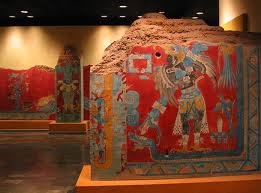 Cacaxtla
Cacaxtla
Cacaxtla is a well-known archaeological site in Tlaxcala, but beyond architecture, its attraction is wall paintings as it contains one of the few Pre-Hispanic murals that have survived to present day. The challenge for archaeologists in this site has been to find a way of preserving the original paintings from natural deterioration (rain and air in themselves represent a threat), and this is why large metal roofs have been placed over the site to protect it from the elements.
The Great Base at Cacaxtla, 200 meters wide and 25 meters high, dominates the imagination. And a little bit further, from the same period, the ceremonial use predominates in Xoxhitecatl, with the Pyramid of Flowers, the Serpent Edifice, the Volcanoes Base and the Spiral Edifice, all of them astounding and with an incomparable view of the Valley of Puebla.
Dressed in clay with shades of red, blue, yellow, black and white, Cacaxtla is one of Mexico’s Treasures. This is one of those places where one cannot avoid imagining how people used to live in other times, in this case the Olmeca. The characteristic front portals and, especially, the intricate interiors of its buildings relate stories of priests and the hegemony of the jaguar warriors armed with obsidian-pointed spears which heroically penetrated their enemies around the year 400 BC.
Puebla
Among Colonial buildings, boutique hotels and churches, Puebla vibrates thanks to its cultural, artistic and commercial life. One of the birthplace’s of mole offers the traveler a large number of restaurants where one can taste it; and also, the incomparable chiles en nogada (a stuffed chili covered in cashew sauce, another dish that is registered by the city). Before you leave, you must visit the Barrio del Artista, the workshops, shops and restaurants at Container City, in Cholula, and naturally, the former Santa Rosa convent.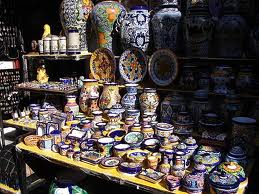
The largest pyramidal structure in the world – on account of its volume – is not in Egypt, but in Cholula; and its god is not Osiris, it is Chiconquiahuitl, also known as Tlaloc. It had a twin temple, smaller, devoted to Quetzalcoatl, which was destroyed by the Spanish to build Colonial edifices. Today, the massive temple to Tlaloc is confused, because of its sheer size, with a mountain or hill. On it peak rests the church of Nuestra Señora de los Remedios, upon a foundation of 20 centuries of history that no Conqueror could ever take apart.
Puebla’s handcrafts come from a multiethnic and multicultural lineage. Papel amate and quexquemitl wool brocade demonstrate their Pre-Hispanic roots. There is complicated carving in onyx and marble. Mixteca basketry is made in braided palm. There is festive mestizo trimming for paper figures. And, naturally, Andalusian and therefore Arabic traces in the very famous ceramics and Talavera. The latter, because of the intricate designs in intense blue and white, and the exquisite craftsmanship, make Puebla an undeniable cusp of Mexican popular art.
The making of a revolution: when the lifeless body of Aquiles was publicly exhibited, under orders of the general Mucio P. Martinez, very few knew that destiny was already in motion. A few days earlier, the brave Serdan family had faced, in Puebla and with arms, a repressor and fearful State. A whole battalion against an idealist clan, with exalted hearts; the first would win the skirmish with bullets, but the dreams of the second would vindicate the avenging war. To the heat of that battle, Doña Carmen Serdan called from a balcony: ¡Viva la Republica! (Long Live the Republic!), and on November 18th, the Revolution had begun.
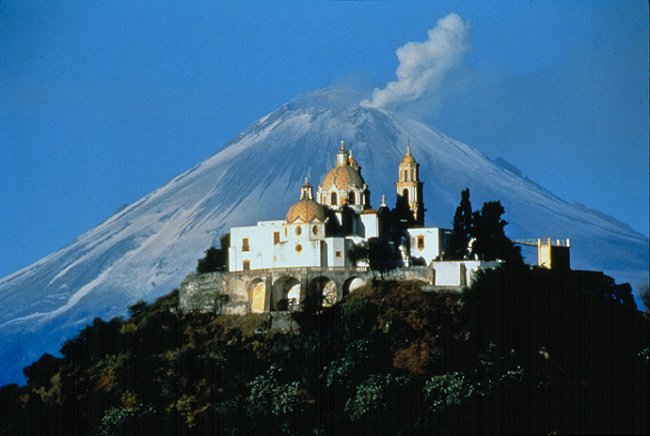 The truly beautiful architectural heritage in Puebla was bequeathed, in 1987 by UNESCO, to the World Heritage; and we are talking about a substantial Baroque fortune. From its foundation ex nihilo, in 1531, the city was dedicated to amassing the almost five thousand Colonial jewels exhibited on its streets. Among this profusion of churches, convents and plazas, the following stand out: the cathedral, of breathtaking ornate, the delicate composition of the Patio de los Azulejos (Mosaic Patio), and the sobriety of the old archiepiscopal palace. Puebla no longer belongs only to Mexico, but to the world and with such wealth, that sharing it does not impoverish us in any way.
The truly beautiful architectural heritage in Puebla was bequeathed, in 1987 by UNESCO, to the World Heritage; and we are talking about a substantial Baroque fortune. From its foundation ex nihilo, in 1531, the city was dedicated to amassing the almost five thousand Colonial jewels exhibited on its streets. Among this profusion of churches, convents and plazas, the following stand out: the cathedral, of breathtaking ornate, the delicate composition of the Patio de los Azulejos (Mosaic Patio), and the sobriety of the old archiepiscopal palace. Puebla no longer belongs only to Mexico, but to the world and with such wealth, that sharing it does not impoverish us in any way.
The very complexity of chiles en nogada is evidence that in Puebla, capital of the New Spain Baroque, gastronomy is passionate and elaborate. The synthesis of the best indigenous and criollo palate; here, chicken is eaten with rose petals, escamol follows green or red pipian, and sweet potatoes or mueganos are only the beginning of an unending sweet parade. The delicious mole poblano is a theme of its own; it was discovered one morning in 1680 by Dominican nuns. Logically this city, Puebla de los Angeles (Angel’s Puebla), the most famous dish had to be of divine inspiration.
Oaxaca
If you want to have delicious meals, you must travel to Oaxaca. In general, the plan includes having a large breakfast at ’20 de Noviembre’ Market and lunch at one of the restaurants downtown that serve Oaxacan food. Between each meal, a stroll around the streets in the historical center is both relaxing and inspiring (as long as it is not the middle of summer). You can’t miss a visit to the former convent of Santo Domingo, the Artes Gráficas Museum (graphic arts) and the Arte Contemporáneo Museum (contemporary art).
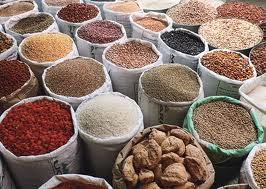 The solidity of Oaxaca’s Cathedral has a purpose: to resist the shaking of the ground. This principle also applies to the very beautiful Santo Domingo Temple, the magnificent Soledad Basilica or the Macedonio Alcala Theater. Showing a grid plan, Colonial urbanism in this city is praise to resistance. Add to this an exceptional ethnic richness and we will understand why, in 1987, it was declared a World Heritage Site. Built to resist major earthquakes, Oaxaca will last in the memory of humanity.
The solidity of Oaxaca’s Cathedral has a purpose: to resist the shaking of the ground. This principle also applies to the very beautiful Santo Domingo Temple, the magnificent Soledad Basilica or the Macedonio Alcala Theater. Showing a grid plan, Colonial urbanism in this city is praise to resistance. Add to this an exceptional ethnic richness and we will understand why, in 1987, it was declared a World Heritage Site. Built to resist major earthquakes, Oaxaca will last in the memory of humanity.
Oaxaca had to have overflowing handicrafts. It is the epicenter of regional diversity, a city where all artisan specialties from the state are manifested. Here, you can find the fabulous profile of alebrijes, whose vast zoology carved in wood, is endless. There are lovely black clay figures, or the refined tradition of wool rugs. And if we go further, there is also the type of ceramics that is passed on from father to son. At the end of the day you will drink the product of the most joyful of artisans, because in Oaxaca, mezcal is a true popular art.
Mole is a gastronomic theme that is present in many parts of Mexico, but in Oaxaca, its execution becomes an art form. Red, black, orange, yellow, green: Oaxacan mole reflects the diversity of its culture and the wealth of its soil. Accompanied by chicken and pork, it is the overture of a culinary symphony that includes quesillo – or Oaxaca cheese –, tlayudas, banana leaf tamales, tasajo and a stream of sweets that include mamon with sorbet and cocada. Of Mixteca, Zapotec and Spanish inspiration, Oaxaca’s cuisine is music for the taste buds.
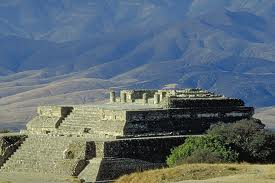 Monte Alban & Mitla
Monte Alban & Mitla
The archaeological sites of Monte Albán and Mitla are two mandatory trips during a stay in Oaxaca. Although their original structures have suffered changes caused by the passage of time. The former is only 10 km away from the city of Oaxaca, and for a very long time, it was the most powerful center in the region. The latter, which is 40 km away, was the center of Zapotec power, once Monte Albán fell into decadence.
The haughty Zapotec capital of Monte Alban contemplates the city of Oaxaca from 400 meters above, from its mountain top. Nobody knows why it was abandoned in the year 1000 AD, and in the middle of its plazas and pyramids it is hard to imagine that anyone would ever want to leave this dreamy place. Nearby, the neighboring Mitla, “the place of the dead”, also of Zapotec foundation and revived by the Mixteca, is famous for its pyramids’ façades, covered in patterns – something uncommon in national archaeology.
Monte Alban and Mitla were both important Zapotec and Mixteco centers, and today they are Oaxacan communities strongly rooted in their traditions. Here, people are proud of their indigenous heritage, as they should be, and Zapotec is heard in every corner. Everything is permeated by the past: the language, the customs, and – fortunately for visitors – the food. A mandatory task for strangers who arrive in the area is to have a conversation with the locals and be surprised by all that can be learned from other ways of social organization.
For obvious reasons, when UNESCO added Oaxaca to its World Heritage list, Monte Alban was included. In the middle of the rainforest environment, its buildings stand out, as well as the two ball-game courts and the eccentric positions of its famous “dancers”. But the Zapotec were not only unbeatable architects: they also perfected their own writing system – which influenced the one in Teotihuacan – as well as their mathematical and astronomic abilities. Proof of this is their calendar and major stele, six meters high, which is perfectly aligned with the Polar Star.
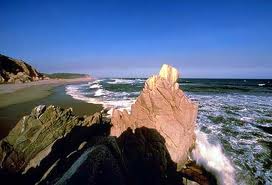 Huatulco
Huatulco
If your idea of heaven is spending time like an iguana sunbathing for days, any Mexican beach is a good destination. But if the traveler also wants to undertake other activities such as golfing, visiting seven different bays, diving in the clearest of waters or rafting in a local river, then the place to go is Huatulco. Nature explodes in every corner of this coast; the food, especially seafood, is fresh and delicious; and the ambiance is relaxed and bohemian.
Its name is a deformation of Cuatolco, which means “place where water runs”, and it is very fitting because water doesn’t run only once, but rather nine times, for there are nine bays in Huatulco that are home to seagulls, cranes, pelicans, corals, dolphins, boas, and turtles. That is why the area was declared a protected zone, and why you should visit it: to lie on the beach and take this all in. If you manage to get up, a little over one hour away you will find the 30 “magical waterfalls” of Copaltilla.
Huatulco is considered a top-level tourist center because of its excellent infrastructure and the infrastructure provided by hotels, cuisine, nightlife, and sports – diving, fishing, surfing, golfing are just some examples; but above all, because of the lovely nine bays and the 36 heavenly beaches. From a fishing town to the perfect resort, Huatulco has its own airport and satisfies every pocket and age, but everyone’s favorite activities are resting on the beach and releasing baby turtles.
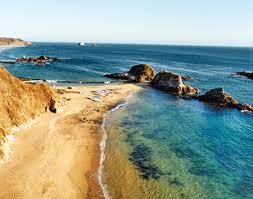 Mazunte
Mazunte
The term eco-chic never made so much sense as in Mazunte. The sea’s various blue tones and the jungle that covers the hills are the perfect scenario for the elegant and small cabins or the various small Mexican and French gastronomy restaurants that serve the best food in the area. In addition to resting in the sun, it is possible to watch turtles laying their eggs in the Centro Mexicano de la Tortuga (Mexican Turtle Center), visit the community in Ventanilla or by spending a day at Zipolite beach.
At the foot of the mountains that are covered in low rainforest, Mazunte has clean waters in various shades of blue. In its heart is turtle conservation: the venue for this is also an aquarium and research center. You can take a walk to Punta Cometa to see the sunset, or head to the community of Ventanilla to visit the swamp in a boat observed by crocodiles.
There are destinations that are very touristy and those that are luxurious. Mazunte does not fit either of these descriptions: it is a destination that is almost virgin and offers in addition to absolute relaxation and guaranteed privacy, a certain sense of good taste for sybarites tired of crowds but who are not willing to give up comfort. Adobe and palm-thatched roofs are the norm, and taking baths with a pail is compensated with massages and unique sunsets.
To book a trip through the Route 7 Region, please send us an email to; info@weareonetravel.com or fill in the Contact Form on the right hand side of this page.



